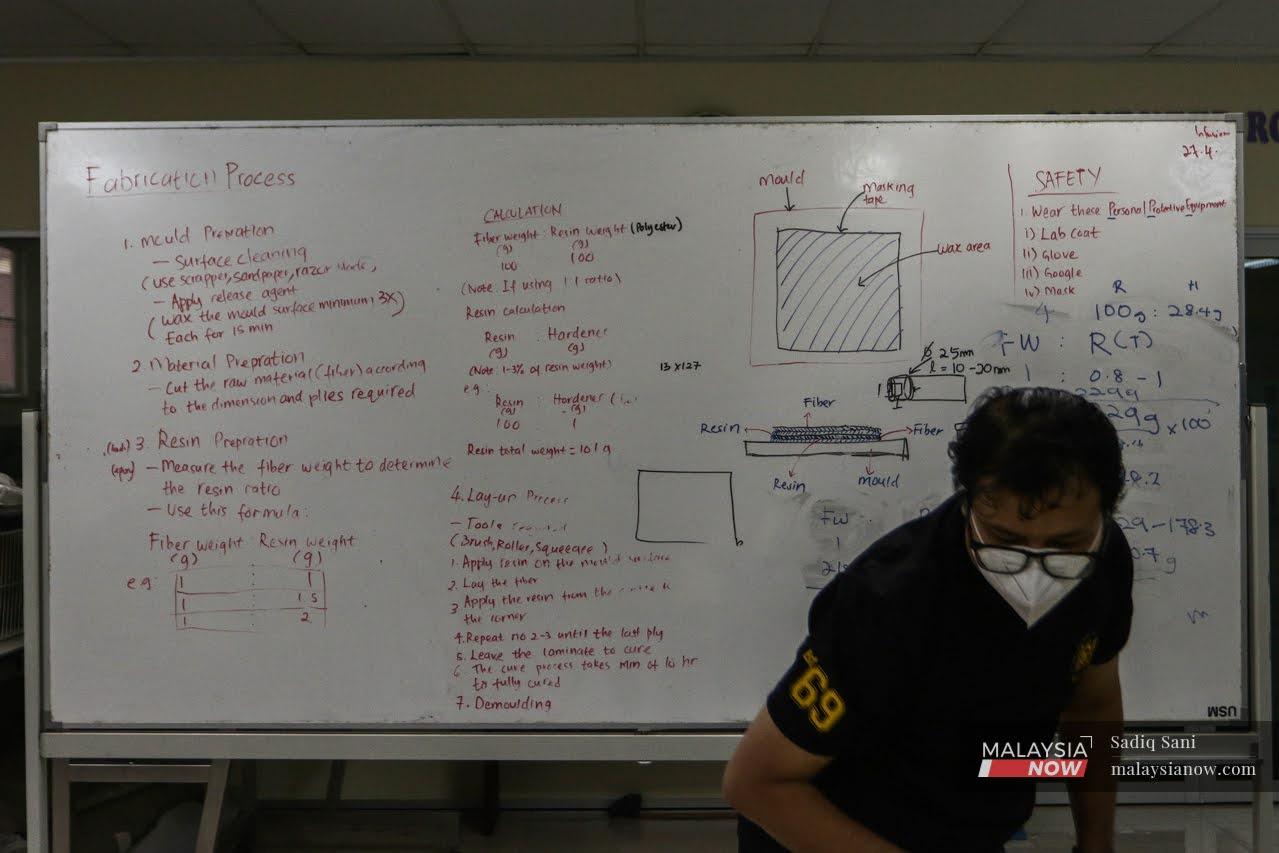The student rocket scientists looking to propel Malaysia to greater heights
The Wau Rocketry team is the first such group in Malaysia to enter the prestigious Spaceport America Cup, which will be held in the US in June.
Just In
All is silent at the aerospace faculty of Universiti Sains Malaysia (USM), a dark red building lying quiet and apparently devoid of activity in a corner of the university compound.
In a small air-conditioned room, though, ideas are bouncing off the ceiling as a group of students discuss what is quite literally rocket science.
Surrounded by her teammates, A Vanmitha squints at a computer screen showing the image of a rocket.
In an adjoining lab, several young men are checking fibreglass parts of the rocket itself.
They are part of a group of 12 dubbed the Wau Rocketry team. Together, they are designing and building a rocket which they plan to enter in the world’s largest student rocket competition – the Spaceport America Cup, which will be held in New Mexico in June.

For now, their rocket is still being developed. But the sky’s the limit for this team of enthusiastic young students – the first in Malaysia to enter the prestigious contest.
“I decided to put this group together after learning that the competition would be held physically in the US,” team leader Vanmitha told MalaysiaNow. “Last year, they held it online.
“We are the only team representing Malaysia,” she added. “In Southeast Asia, Singapore and Thailand are also sending their own teams.”
More than 40 countries in total are expected to participate in the Spaceport America Cup, involving some 1,700 students.
Vanmitha, who is in her fifth semester at USM’s aerospace faculty, said the university got 92nd place out of the 151 eligible teams.
“At the elimination stage, the rockets will be judged solely on the data and stimulations in the OpenRocket software.”

The Spaceport America Cup was first held in 2017. It comprises two general categories: the 10,000ft launch and the 30,000ft launch.
Within these categories, students can choose to enter the sub-group of “commercial off the shelf” or “student research and development”.
Each entry will be judged based on three criteria: maximum altitude, recovery of fallen pieces, and the live streaming of data to the on-field station.
Wau Rocketry intends to compete in the 10,000ft commercial off the shelf category.
Their rocket, “Hebat”, will reach a full length of 2.87m and weigh 22.67kg.
It is designed to use an Aerotech M1850 solid propellant motor, and will carry a nano satellite created by USM to be launched at a height of 900ft.
“This nano satellite will collect mission data such as air and environment pressure, ultraviolet rays, and the effects of pollution in the New Mexico area, and will land using GPS,” Vanmitha said.
Instead of using a conventional parachute, she added, the satellite will be borne to earth using a drone.

The main challenge is the fact that they cannot test the rocket for launch in Malaysia. This is one of the conditions set by the organisers.
“We will launch the rocket just once, at the competition itself,” Vanmitha said. “It’s do or die.”
The rocket will be assembled in the US, given that some of the parts can only be obtained there.
Wau Rocketry is guided by SpaceIn chief operating officer Ahmad Tamimi Ahmad Termizi and Julian Chee Yie Jian, an aerospace engineering student at Wichita State University.
The teammates’ lecturers, Norilmi Amilia Ismail and Chang Wei Shyang, are also on hand for further guidance and advice.
Tamimi hopes that the team’s participation in the contest will direct the attention of the public as well as the government to the potential of the rocket industry in Malaysia.

“We have a lot of potential because our country is located on the equator,” he said. “This allows Malaysia to be a rocket launch site at both land and sea.”
In terms of cost, technology and skills, he said, it was doable.
“We just need a high level of commitment from the government.”
He said Malaysia currently lags far behind neighbouring countries in this regard, despite its aerospace industry beginning ahead of theirs.
Speaking to MalaysiaNow, he said the rocket industry needs demand to continue developing.
“Research in local rocket development has been conducted since the 1980s, but there has been little support from the government,” he said.
“This is why our progress is very slow.”
Subscribe to our newsletter
To be updated with all the latest news and analyses daily.
